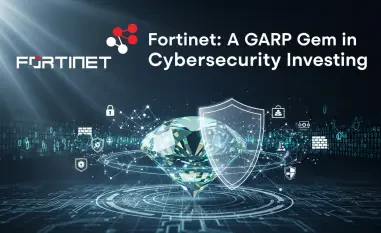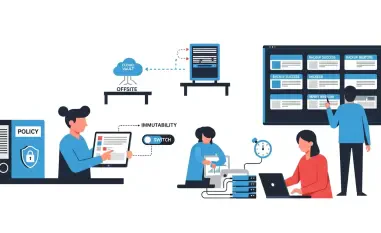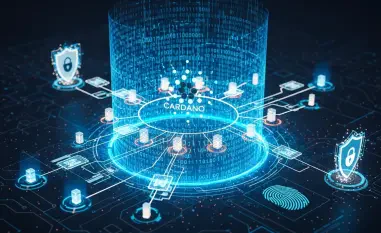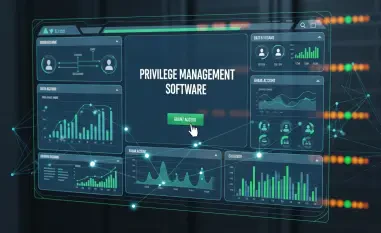Introduction
Imagine a world where a single cyberattack on a connected vehicle could disrupt not just one car, but an entire fleet, compromising safety and exposing sensitive data across a vast network of suppliers and manufacturers. This scenario is no longer a distant possibility but a pressing reality in the automotive industry, where vehicles are increasingly software-driven and interconnected. The stakes for robust cybersecurity have never been higher, as threats evolve rapidly alongside technological advancements. This FAQ article aims to address critical questions surrounding the development of a mature cybersecurity program in the automotive sector, offering actionable insights and guidance. Readers can expect to explore how to transcend basic compliance checklists, tackle supply chain risks, leverage emerging technologies, and build proactive defenses tailored to the unique challenges of this industry.
The scope of this discussion encompasses key strategies for enhancing cybersecurity maturity, navigating complex regulatory landscapes, and adopting innovative tools to stay ahead of threats. By delving into these areas, the content seeks to equip stakeholders with a deeper understanding of what it takes to protect modern vehicles and their ecosystems. Each section is crafted to provide clarity on specific issues, ensuring that the information is both practical and relevant to current industry needs.
Key Questions or Key Topics
What Defines a Mature Automotive Cybersecurity Program?
A mature cybersecurity program in the automotive industry goes beyond simply adhering to standards and involves a comprehensive approach to risk management. It is critical because vehicles today are not just mechanical devices but complex digital ecosystems vulnerable to sophisticated cyber threats. The foundation of such a program lies in adopting recognized frameworks like ISO standards, validated through external audits to identify gaps and assess progress.
To achieve maturity, organizations must customize their strategies to address specific threats unique to their operations, rather than relying solely on generic guidelines. This means deploying proactive controls, ensuring visibility across all environments, including cloud systems, and maintaining round-the-clock detection and response capabilities. Tailoring defenses to the organization’s assets and risks ensures a more resilient posture against potential attacks.
Evidence from industry practices suggests that companies excelling in cybersecurity often integrate continuous monitoring with regular assessments to adapt to new vulnerabilities. By focusing on these elements, automakers can build a program that not only meets compliance requirements but also anticipates and mitigates emerging dangers effectively.
Why Is Regulatory Compliance Not Enough for Cybersecurity?
Regulatory compliance, while essential, serves only as a starting point for automotive cybersecurity due to the dynamic nature of cyber threats. Standards like UNECE WP.29 and ISO/SAE 21434 provide structured guidelines, particularly for managing third-party risks in design and manufacturing. However, these regulations often represent minimum requirements that may not fully address the specific risks faced by individual organizations.
Going beyond compliance involves conducting in-depth, business-specific risk assessments to identify vulnerabilities that standardized rules might overlook. Automakers and suppliers need to evaluate emerging threats continuously, ensuring that their security measures evolve in tandem with the threat landscape. This proactive mindset helps in safeguarding critical systems against attacks that exploit gaps in baseline compliance.
Industry observations indicate that organizations achieving higher security levels often exceed regulatory mandates by embedding risk evaluation into their daily operations. Such an approach ensures that cybersecurity is not just a box to check but a strategic priority aligned with the organization’s broader goals.
How Can Supply Chain Risks Be Managed Effectively?
The automotive supply chain, with its numerous third-party dependencies, presents a significant cybersecurity challenge as vulnerabilities at any point can compromise the entire ecosystem. Managing these risks is vital because a single weak link, such as an unsecured supplier, can expose sensitive data or disrupt operations across the network. The complexity of global supply chains amplifies the need for stringent oversight and collaboration.
A multi-layered strategy is recommended to address these risks, starting with verifying supplier compliance through audited frameworks like TISAX. Enforcing strict data access controls and ensuring suppliers maintain robust monitoring and incident response capabilities are also critical steps. This comprehensive approach helps in creating a security culture that extends beyond internal operations to encompass all partners.
Successful examples from the industry show that leading companies often implement rigorous vetting processes and regular audits to maintain supply chain integrity. By prioritizing these measures, organizations can significantly reduce the likelihood of breaches originating from external sources, thereby strengthening overall security.
What Role Do Metrics Play in Enhancing Cybersecurity Effectiveness?
Metrics and key performance indicators (KPIs) are indispensable tools for measuring the effectiveness of cybersecurity efforts in the automotive sector. Their importance lies in providing actionable insights into vulnerabilities and response capabilities, enabling organizations to allocate resources efficiently. Without such metrics, it becomes challenging to identify critical areas needing attention amidst a vast array of potential threats.
Adopting risk-based vulnerability management (RBVM), supported by tools like cloud-native application protection platforms (CNAPP), allows for prioritizing threats based on contextual risk assessments. This method ensures that the most severe vulnerabilities are addressed promptly, minimizing exposure windows. Metrics thus transform raw data into strategic guidance for decision-making.
Industry trends highlight that organizations leveraging RBVM often achieve better outcomes by focusing on high-impact risks rather than spreading efforts thinly across all issues. This targeted approach, backed by quantifiable data, fosters a more effective and responsive cybersecurity posture.
How Can Emerging Technologies Like AI Transform Automotive Cybersecurity?
Emerging technologies, such as Generative AI (GenAI) and agentic AI, hold transformative potential for automotive cybersecurity by automating and enhancing threat detection and response. Their significance stems from the growing complexity of cyber threats, which require faster and more intelligent solutions than traditional methods can provide. The convergence of IT and operational technology (OT) environments further underscores the need for innovative tools.
These AI-driven solutions can proactively identify threat paths, recognize attack patterns, and automate security operations, significantly reducing response times. However, responsible deployment with human oversight is crucial to avoid unintended consequences or over-reliance on automated systems. Balancing innovation with caution ensures that technology serves as an enabler rather than a liability.
Insights from current developments suggest that companies integrating AI into their security frameworks often gain a competitive edge by staying ahead of evolving threats. As these technologies mature over the coming years, their adoption is expected to become a cornerstone of advanced cybersecurity strategies within the industry.
Summary or Recap
This FAQ addresses pivotal aspects of building a mature automotive cybersecurity program that surpasses basic compliance checklists. Key insights include the necessity of tailoring risk management to specific organizational needs, viewing regulatory compliance as a baseline rather than a complete solution, and adopting a multi-layered approach to supply chain security. Metrics like RBVM stand out as essential for prioritizing critical threats, while emerging technologies such as AI offer promising avenues for automating and enhancing defenses.
The main takeaway is that automotive cybersecurity demands a proactive, dynamic approach to keep pace with an ever-changing threat landscape. By focusing on customized strategies, continuous monitoring, and responsible innovation, stakeholders can safeguard vehicles and their ecosystems effectively. For those seeking deeper knowledge, exploring resources on standards like ISO/SAE 21434 or advancements in AI security applications is highly recommended.
Conclusion or Final Thoughts
Reflecting on the discussions held, it becomes evident that the journey to robust automotive cybersecurity necessitates a shift from static compliance to adaptive, risk-focused strategies. The exploration of various challenges, from supply chain vulnerabilities to regulatory limitations, highlights a clear path forward through tailored solutions and technological innovation.
Looking ahead, stakeholders are encouraged to prioritize the integration of advanced tools like AI with careful oversight, ensuring that automation enhances rather than undermines security efforts. A commitment to regular audits, supplier collaboration, and metrics-driven decision-making emerges as actionable steps to fortify defenses in this interconnected landscape.
As a final consideration, it is suggested that individuals and organizations assess how these insights apply to their specific contexts, identifying areas where current practices could evolve. Taking proactive measures to address unique risks and staying informed about industry trends proves vital for maintaining resilience against future cyber threats.













